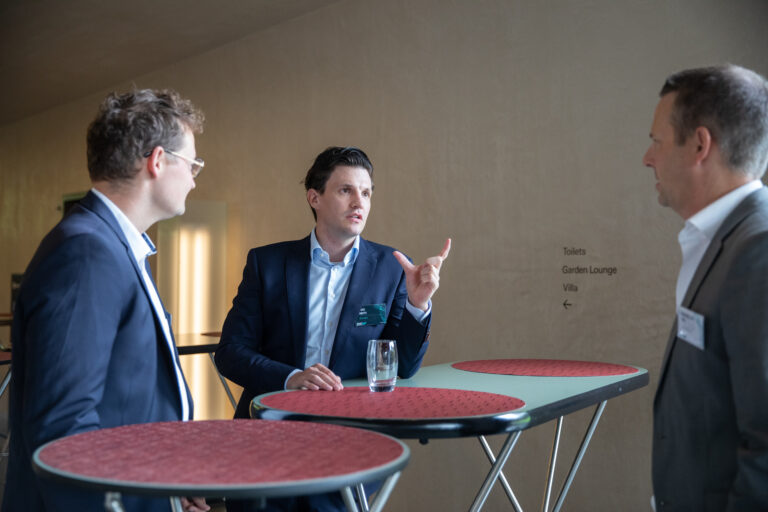As global air travel demand continues to rise – projected to double by 2050 – the aviation sector faces mounting pressure to reduce its climate impact. Pre-COVID, the aviation sector accounted for around 3% of CO2 emissions from fossil fuel combustion, and when non-CO2 effects like nitrous oxides emissions and contrails – the thin line-shaped clouds that form when aircraft exhaust condenses – are factored in, its climate impact is 2-3 times greater. Unlike ground transport, aviation cannot yet rely on electrification primarily due to energy density constraints, making it one of the most difficult sectors to decarbonize. Sustainable aviation fuel (SAF) offers a pathway to address these challenges while leveraging existing aircraft and infrastructure.
The ask from the $200Bn+ aviation fuel market is a big one – how can the sector satisfy a growing demand, reduce its climate impact, and avoid surges in ticket prices simultaneously? As Emerald is actively exploring and monitoring this space, we asked our SAF expert, Max Hefti, to explain some of the key factors shaping this rapidly evolving sector and to see where we stand with solutions that can scale, deliver on emission reductions, and drive down the cost curve.

Q: What is the current state of Sustainable Aviation Fuel (SAF)?
Max: SAF is an important pillar of the aviation sector’s strategy towards net zero: The International Air Transport Association estimates that up to 65% of emission reductions may be due to SAF. However, in 2024 SAF production represented only 0.3% of global jet fuel use, though major airlines and fuel suppliers have launched initiatives to procure SAF. Today, the most commercially viable and available SAF production pathway is HEFA (Hydroprocessed Esters and Fatty Acids), which uses feedstocks like vegetable oils, waste oils, and fats. HEFA-based SAF is certified for use in existing engines for up to 50% and typically reduces lifecycle emissions by up to 50% compared to conventional jet fuel, heavily depending on the feedstocks used. However, HEFA’s scalability is limited by feedstock availability. This is where emerging technologies like Power-to-Liquid (PtL) come into play. While still in the early stages of commercialization, PtL represents a longer-term solution for scaling SAF production.
Q: Emerald’s portfolio company Ineratec develops a Power-to-liquid (PtL) to make SAF—how does PtL work?
Max: PtL enables the production of electro-based aviation fuel, or e-SAF. Here, a carbon and a hydrogen source are converted into liquid fuels using renewable electricity. Typically, CO2 is reduced to carbon monoxide (CO) while hydrogen may be produced through water electrolysis. Together, these components form syngas, which then undergoes Fischer-Tropsch synthesis – a well-established process developed by Sasol and others – to produce longer-chain hydrocarbons. The resulting products include not only e-SAF, but also valuable by-products like e-waxes, used in adhesives and cosmetics, providing additional revenue streams. SAF produced through the FT route is also approved as a drop-in fuel. Another emerging pathway allowing the production of e-SAF, Methanol-to-Jet, follows a different route: CO₂ and hydrogen are first reacted to form e-methanol, which is then converted into e-SAF using a process that leverages the methanol-to-olefins pathway, pioneered by Mobil. ASTM certification for this pathway is currently pending.
Q: How are these processes more sustainable than today’s fossil-based aviation fuel?
Max: The key lies in the feedstock and energy sources: Conventional jet fuel’s emissions are approximately 3.8 tCO₂e (tons of carbon dioxide equivalent) per ton of fuel. e-SAF can drastically reduce these emissions by up to 75-90%, but only when powered by renewable electricity and using non-fossil CO₂ sources. If the process relies on high-carbon electricity, e-SAF can end up with a higher total CO₂ footprint than conventional jet fuel. In addition to CO₂ reductions, SAF also offers the potential to mitigate aviation’s non-CO₂ climate effects. A recent Airbus A350 test flight using 100% SAF demonstrated a reduction in contrail radiative forcing, due to lower aromatic and sulfur content.
Q: How does SAF’s “drop-in” capability influence its adoption?
Max: One of SAF’s key advantages is its compatibility with existing aircraft and infrastructure. Several SAF pathways are certified for blending with conventional jet fuel, with some approved for blends up to 50% by volume. Research is ongoing to increase these blend limits. This drop-in capability enables adoption without major modifications to engines or fueling systems, facilitating easier integration compared to alternative propulsion technologies like electrification or hydrogen.
Q: Speaking of electrification, why can’t we copy-paste the electrification efforts happening in other sectors, such as ground transport?
Max: While electrification has transformed ground transport, applying the same approach to aviation faces a fundamental challenge: energy density. SAF maintains an energy density of approximately 35 MJ per liter, comparable to conventional jet fuel. In contrast, current commercially available lithium-ion batteries achieve energy densities in the range of 1-3 MJ/L, though research is ongoing to develop batteries with higher energy densities. This vast difference in energy density means that battery-powered aircraft would need to be significantly larger and heavier to carry the same amount of energy as a jet-fuel powered plane, making long-haul flight impractical for the near future. Electrification is tackling short-haul routes first and is an important pillar for airport operations. Hydrogen is another alternative, with almost three times the specific energy of jet fuel. However, its lower energy density, meaning it takes up a lot of space for the energy it contains, and storage challenges make it a longer-term solution. For the near-term future, SAF’s drop-in capability positions it as a practical solution for reducing emissions, especially for long-haul aviation.
Q: What are the key drivers and remaining barriers to wider SAF adoption?
Max: Cost is a major barrier to SAF adoption. Across most SAF pathways production costs are heavily dependent on feedstock prices. HEFA-based SAF is typically priced at 2–3 times the cost of fossil jet fuel, though this can vary based on feedstock. HEFA alone cannot meet future demand due to its reliance on limited bio-based feedstocks. Satisfying future demand requires scaling alternative pathways, including e-SAF, which has greater feedstock availability but whose high production costs pose a major challenge. Projects with access to low-cost renewable electricity and concentrated CO2 sources are well-positioned, as electricity costs alone can represent up to 50%+ of the total production cost. e-SAF’s production must move beyond pilot projects and scale significantly to drive down costs and meet future demand.
The EU’s ReFuelEU mandate provides a strong demand signal, requiring 2% SAF blending starting this year, rising to 6% by 2030, with an explicit 1.2% sub-mandate for e-SAF. However, despite this policy push, very few large-scale e-SAF projects have reached Final Investment Decision. According to a recent report by Project SkyPower, projects remain constrained by high costs, financing risk, and uncertain demand. It further highlights three critical factors—public funding, long-term offtake agreements, and regulatory certainty—needed to make e-SAF projects bankable. Without these mechanisms, early projects struggle to secure financing, delaying scale-up and cost reductions.
Emerald’s portfolio company Ineratec, for example, recently secured €70M in funding, backed by the European Investment Bank and Breakthrough Energy Catalyst. Their 2,500-ton-per-year e-fuel production plant, expected to start operations in 2025, is one of the first large-scale PtL projects in Europe. These early projects will be crucial in demonstrating feasibility, reducing financial risk, and paving the way for larger-scale e-SAF deployment.
Even with SAF’s cost premium, the impact on ticket prices due to e-SAF is expected to be modest in the near term. With a 6% SAF blend (including 1.2% e-SAF) by 2030, fare increases are projected to remain within a few percentage points. However, airlines are highly cost-sensitive to fuel prices, since aircraft fuel and oil account for 25–35% of total airline costs. As blending ratios rise to 70% SAF (35% e-SAF) by 2050, airlines will face mounting cost pressures, hence the need for long-term cost reductions and financing instruments to maintain affordability. At Emerald, we are excited about the investment opportunities this brings and are actively supporting the scale-up and cost reduction of SAF production.
References:
BNEF, Nat Sustain 6, 404–414 (2023), IATA – SAF to net zero, The Global Economy, IATA – SAF consumption, IATA – Blending Ratio, Calderon et al. 2024 Golden, CO: National Renewable Energy Laboratory. NREL/TP-5100-87803, ACS Catalysis 2015 5 (3), 1922-1938, Nat Commun 13, 7853 (2022), Energy Environ. Sci. 2022 (15) 4798, Energy Conversion and Management 292 (2023) 117427, Märkl et al. Powering aircraft with 100% sustainable aviation fuel reduces ice crystals in contrails, EGUsphere [preprint], Journal of Propulsion and Power 2010 (26) 1184, Volta Foundation Battery Report 2024, IATA – Fuel Price 2024, Project SkyPower – Accelerating the take-off for e-SAF in Europe, Ineratec €70M raise, IATA – Airline Costs
More on SAF and aviation at Emerald:
INERATEC, sustainable aviation fuel vanguard, scores Emerald investment
